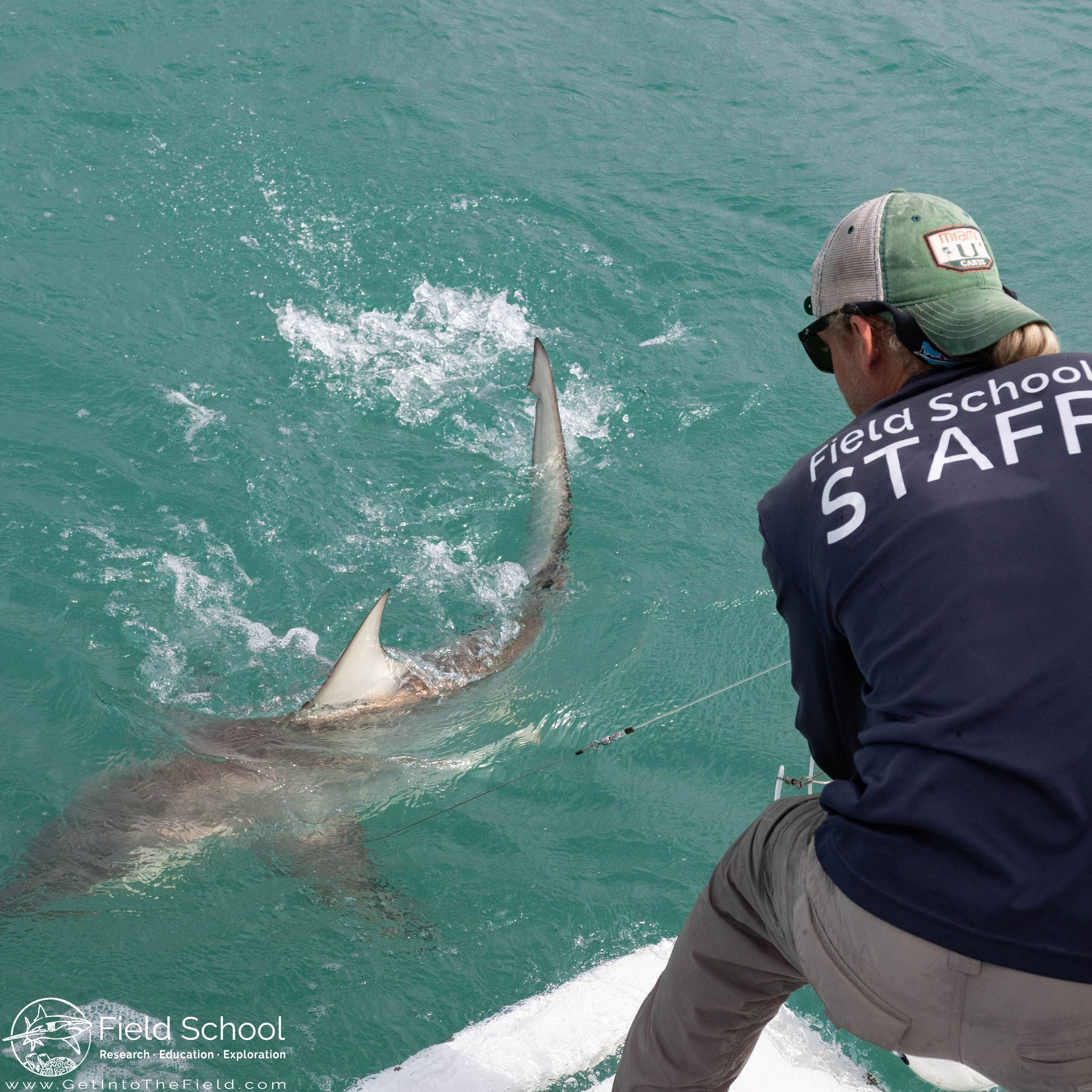A day in the life of a shark researcher
On any given day of shark research, our staff starts off with a morning check of the weather. Weather conditions usually dictate the type of fishing gear that we can use and the locations in which we fish. After consulting with the ship’s captains, we set off to fish in the waters of Biscayne Bay just off the coast of Miami Florida.
While we head out to our fishing site, bait is cut and placed on circle hooks for our bottom longline. Circle hooks are different than normal fishing hooks in that the barb of the hook points inward to help prevent foul hooking. This style of hook often means that sharks captured are hooked in the corner of the jaw which makes it very easy for us to quickly remove the hook. Scientific longlines are designed to be effective at catching sharks but are altered from their commercial counterparts to keep animal welfare a priority. Our longlines will only “soak” for up to one hour and are short in length, only containing 25 circle hooks. While our fishing gear is in the water, the team preps our data collection gear to make sure we are ready to go if we are lucky enough to catch a shark!
For each shark we catch, we collect the following data:
· Three standard length measurements and one girth measurement
· Muscle sample used for diet analysis
· Genetic sample used to see how closely sharks are related
· Identification tag used to tell individuals apart
· Blood sample used for health assessment before
When sharks are captured, they experience physiological stress. They are usually swimming (or exercising) more than they would normally in the wild when this happens. Just like in humans when we exercise, their bodies can show elevated metabolites like lactate which can physically harm the animals. In order to minimize the stress that each shark experiences from capture, we aim to collect all of our data within 3 to 5 minutes. Sharks are then released back to where we captured them and we record the release condition.
In our fishing areas in southern Florida, we often encounter several different species. The most common sharks that we catch are blacknose, blacktip, and nurse sharks. We also regularly capture bonnethead, great hammerhead, tiger, sandbar, bull, lemon, sharpnose, and scalloped hammerhead sharks!
Despite sharks living on this planet for over 450 million years, we know relatively little about them compared to many of the animals that live on land. We do know however, that many of the over 500 species of sharks are facing population declines. This is why learning as much about them as possible is so important for their conservation. The more that we can learn for each species, the better that we can protect them.



